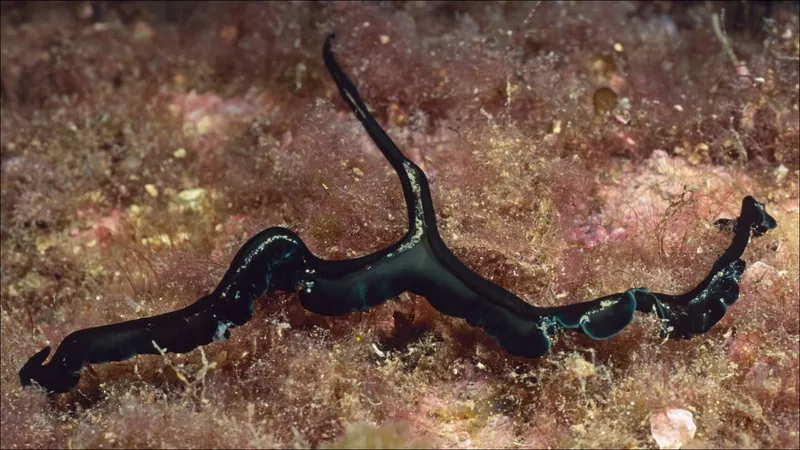
Meet the Green Spoonworm: The Tentacle Monsters that Transform Males into 'Living Testicles'!
2024-11-23
Author: Jia
Location, Diet, and Unique Features
Residing in seabeds, these fascinating creatures feast on organic matter filtered from the water and small invertebrates, making them what can only be described as vacuum cleaners of the ocean floor. They employ a spoon-shaped proboscis—a long, flexible mouthpart—to trap any drifting delicacies in the water. Trond Roger Oskars, a marine invertebrate specialist at Møre Research Institute, likens their appearances to "tentacle monsters from a sci-fi film," as these peculiar beings can extend their long proboscis up to 10 times their body length, which averages between 6 to 7 inches (15 to 18 centimeters).
An Unusual Twist in Sexual Dimorphism
What makes the green spoonworm even more captivating is its unique reproductive strategy. The vibrant, eye-catching green color of the female specimen comes from a toxic pigment known as bonellin, which not only serves to deter predators but also plays a pivotal role in determining the sex of the worm. In a twist of fate, the larval form of this creature decides its gender based on its surroundings. If a larva floats unobstructed to the seafloor, it will develop into a female. However, if it lands on an already-established female, the bonellin in her body chemically prompts it to transform into a male. Remarkably tiny and often described as microscopic, these males don't live independently; instead, they become a parasitic extension of the female, essentially evolving into 'living testicles' whose sole purpose is to provide sperm for fertilizing her eggs.
Potential Medical Breakthroughs
The fascinating properties of bonellin extend beyond its role in reproduction. This toxic pigment has been identified as a potential new antibiotic, opening the door to a realm of medical innovation. As Oskars points out, the green spoonworm exemplifies the need for deeper exploration of our oceanic realms. With scientists estimating that we have only cataloged about 10% of marine species, the possibility of discovering other unique organisms with beneficial uses remains tantalizingly high.
So, why should we care about the green spoonworm? Beyond their peculiar reproductive habits and their role in the ecosystem, these creatures represent the vast mysteries still waiting to be unveiled beneath the waves. Each new discovery could lead us to breakthroughs that could change our understanding of life—both in the ocean and in human medicine.


 Brasil (PT)
Brasil (PT)
 Canada (EN)
Canada (EN)
 Chile (ES)
Chile (ES)
 España (ES)
España (ES)
 France (FR)
France (FR)
 Hong Kong (EN)
Hong Kong (EN)
 Italia (IT)
Italia (IT)
 日本 (JA)
日本 (JA)
 Magyarország (HU)
Magyarország (HU)
 Norge (NO)
Norge (NO)
 Polska (PL)
Polska (PL)
 Schweiz (DE)
Schweiz (DE)
 Singapore (EN)
Singapore (EN)
 Sverige (SV)
Sverige (SV)
 Suomi (FI)
Suomi (FI)
 Türkiye (TR)
Türkiye (TR)